Electric Field Induced Changes of a Diffusion Flame and Heat Transfer near an Impinging Surface
Abstract
:1. Introduction
2. Experimental Configuration
2.1. Burner and Electric Field Setups
2.2. Electric Field Influenced Flame
3. Experimental Methods
3.1. Infrared (IR) Thermal Distribution Imaging
3.2. Schlieren Imaging
4. Results and Discussion
4.1. Heat Transfer from Impinging Flames in Electric Fields
4.2. Heat Loss from the Plate
4.3. Heat Concentration Under the Influence of an Electric Field
5. Conclusions
Author Contributions
Funding
Acknowledgments
Conflicts of Interest
References
- Prager, J.; Riedel, U.; Warnatz, J. Modeling ion chemistry and charged species diffusion in lean methane–oxygen flames. Proc. Combust. Inst. 2007, 31, 1129–1137. [Google Scholar] [CrossRef]
- Lawton, J.; Weinberg, F.J. Electrical Aspects of Combustion; Oxford University Press: Oxford, UK, 1969; ISBN 0198553412. [Google Scholar]
- Papac, M.J.; Dunn-Rankin, D. Canceling Buoyancy of Gaseous Fuel Flames in a Gravitational Environment Using an Ion-Driven Wind. Ann. N. Y. Acad. Sci. 2006, 1077, 585–601. [Google Scholar] [CrossRef] [PubMed]
- Karnani, S.; Dunn-Rankin, D.; Takahashi, F.; Yuan, Z.-G.; Stocker, D. Simulating Gravity in Microgravity Combustion Using Electric Fields. Combust. Sci. Technol. 2012, 184, 1891–1902. [Google Scholar] [CrossRef]
- Strayer, B.A.; Posner, J.D.; Dunn-Rankin, D.; Weinberg, F.J. Simulating microgravity in small diffusion flames by using electric fields to counterbalance natural convection. Proc. R. Soc. Lond. A 2002, 458, 1151–1166. [Google Scholar] [CrossRef]
- Advanced Combustion via Microgravity Experiments (ACME) Webpage. Available online: http://issresearchproject.grc.nasa.gov/Investigations/ACME/ (accessed on 10 May 2018).
- Volkov, E.N.; Kornilov, V.N.; de Goey, L.P.H. Experimental evaluation of DC electric field effect on the thermoacoustic behaviour of flat premixed flames. Proc. Combust. Inst. 2013, 34, 955–962. [Google Scholar] [CrossRef]
- Vega, E.V.; Shin, S.S.; Lee, K.Y. NO emission of oxygen-enriched CH4/O2/N2 premixed flames under electric field. Fuel 2007, 86, 512–519. [Google Scholar] [CrossRef]
- Weinberg, F.J. Advanced Combustion Methods; Academic Press Inc.: Orlando, FL, USA, 1986. [Google Scholar]
- Sakhrieh, A.; Lins, G.; Dinkelacker, F.; Hammer, T.; Leipertz, A.; Branston, D.W. The influence of pressure on the control of premixed turbulent flames using an electric field. Combust. Flame 2005, 143, 313–322. [Google Scholar] [CrossRef]
- Park, D.G.; Choi, B.C.; Cha, M.S.; Chung, S.H. Soot Reduction Under DC Electric Fields in Counterflow Non-Premixed Laminar Ethylene Flames. Combust. Sci. Technol. 2014, 186, 644–656. [Google Scholar] [CrossRef]
- Altendorfner, F.; Kuhl, J.; Zigan, L.; Leipertz, A. Study of the influence of electric fields on flames using planar LIF and PIV techniques. Proc. Combust. Inst. 2011, 33, 3195–3201. [Google Scholar] [CrossRef]
- Kuhl, J.; Jovicic, G.; Zigan, L.; Leipertz, A. Transient electric field response of laminar premixed flames. Proc. Combust. Inst. 2013, 34, 3303–3310. [Google Scholar] [CrossRef]
- Schmidt, J.; Kostka, S.; Lynch, A.; Ganguly, B. Simultaneous particle image velocimetry and chemiluminescence visualization of millisecond-pulsed current–voltage-induced perturbations of a premixed propane/air flame. Exp. Fluids 2011, 51, 657–665. [Google Scholar] [CrossRef]
- Chien, Y.-C.; Escofet-Martin, D.; Dunn-Rankin, D. CO emission from an impinging non-premixed flame. Combust. Flame 2016, 174, 16–24. [Google Scholar] [CrossRef] [PubMed]
- Weinberg, F.J.; Dunn-Rankin, D.; Carleton, F.B.; Karnani, S.; Markides, C.; Zhai, M. Electrical aspects of flame quenching. Proc. Combust. Inst. 2013, 34, 3295–3301. [Google Scholar] [CrossRef]
- Tinajero, J.; Bernard, G.; Autef, L.; Dunn-Rankin, D. Characterizing I-V Curves for Non-Premixed Methane Flames Stabilized on Different Burner Configurations. Combust. Sci. Technol. 2017, 189, 1739–1750. [Google Scholar] [CrossRef]
- Chattock, A.P. On the electrification needle-points of air. Lond. Edinb. Dublin Philos. Mag. J. Sci. 1891, 32, 285–304. [Google Scholar] [CrossRef]
- Settles, G.S. Schlieren and Shadowgraph Techniques: Visualizing Phenomena in Transparent Media; Springer: Berlin/Heidelberg, Germany, 2001; ISBN 3-540-66155-7. [Google Scholar]
- Chien, Y.C.; Dunn-Rankin, D. Electric Field Effects on Carbon Monoxide Release from Impinging Flames. In Proceedings of the 8th US National Combustion Meeting, Park City, UT, USA, 9–22 May 2013. [Google Scholar]
- Chien, Y.-C. Electrical Aspects of Impinging Flames. Ph.D. Dissertation, UC Irvine, Irvine, CA, USA, 2015. [Google Scholar]
- Incropera, F.P.; DeWitt, D.P.; Bergman, T.L.; Lavine, A.S. Fundamentals of Heat and Mass Transfer 5th Edition with IHT2.0/FEHT with Users Guides; Wiley: Hoboken, NJ, USA, 2001; ISBN 978-0-471-20448-0. [Google Scholar]
- Remie, M.J.; Särner, G.; Cremers, M.F.G.; Omrane, A.; Schreel, K.R.A.M.; Aldén, L.E.M.; de Goey, L.P.H. Heat-transfer distribution for an impinging laminar flame jet to a flat plate. Int. J. Heat Mass Transf. 2008, 51, 3144–3152. [Google Scholar] [CrossRef]
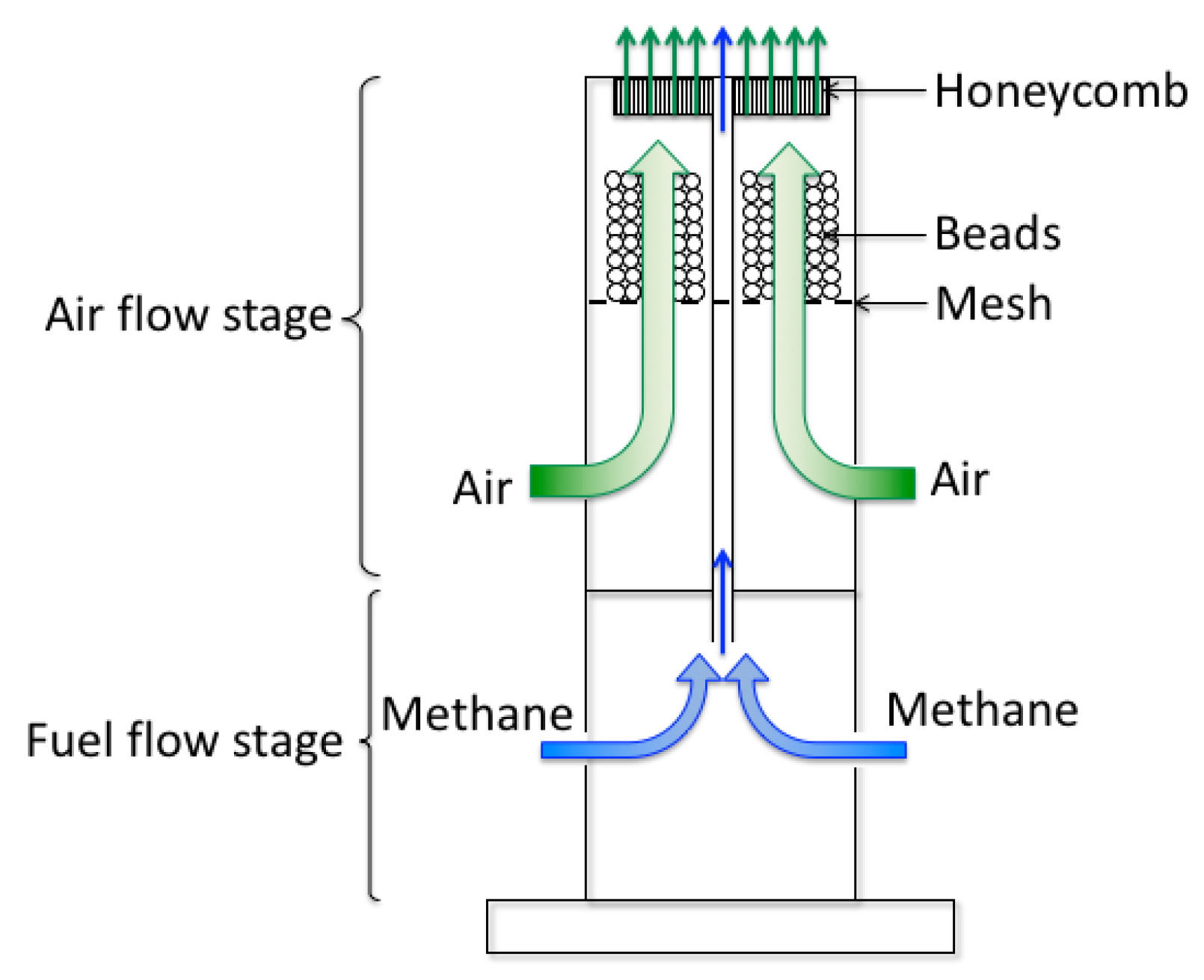


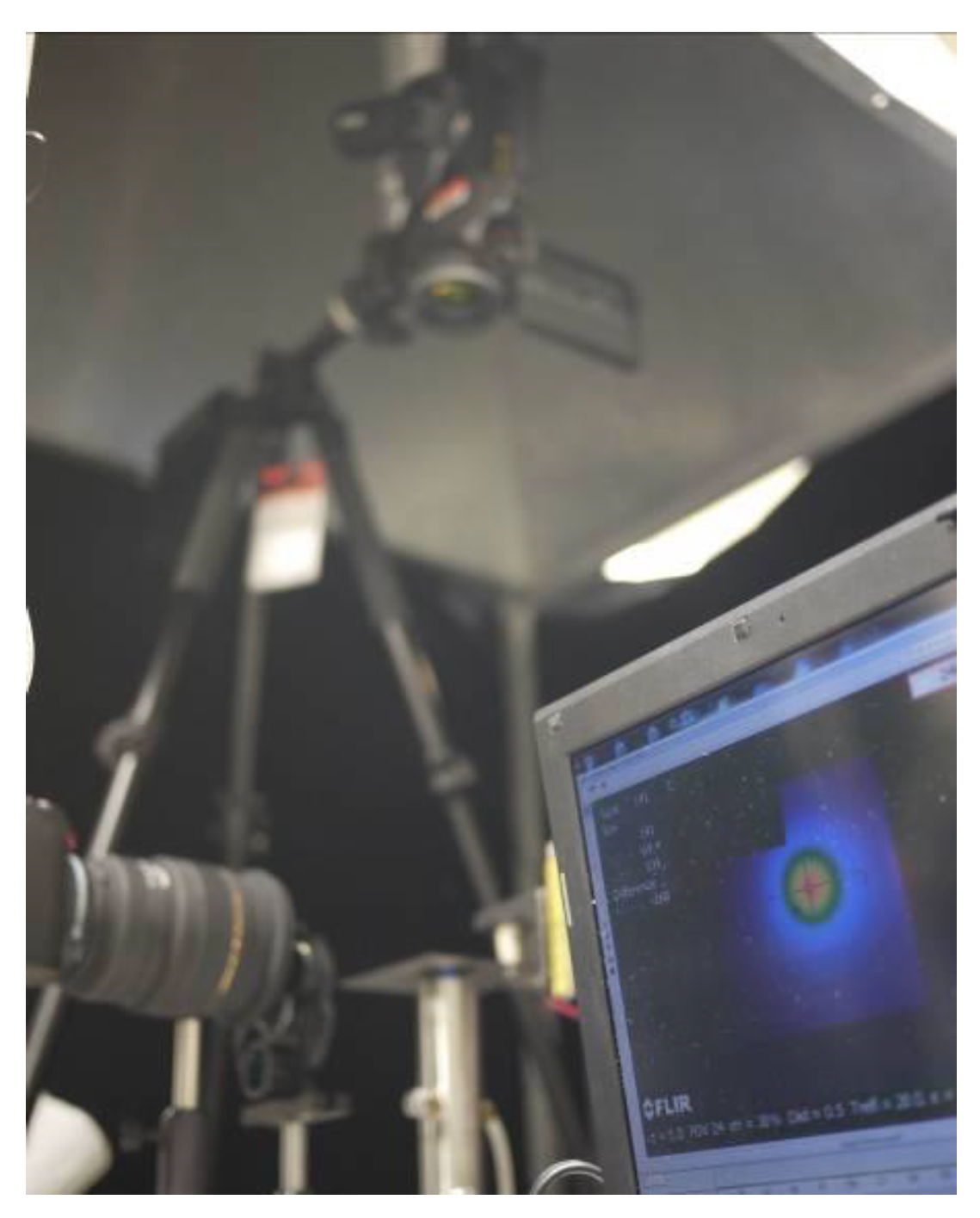
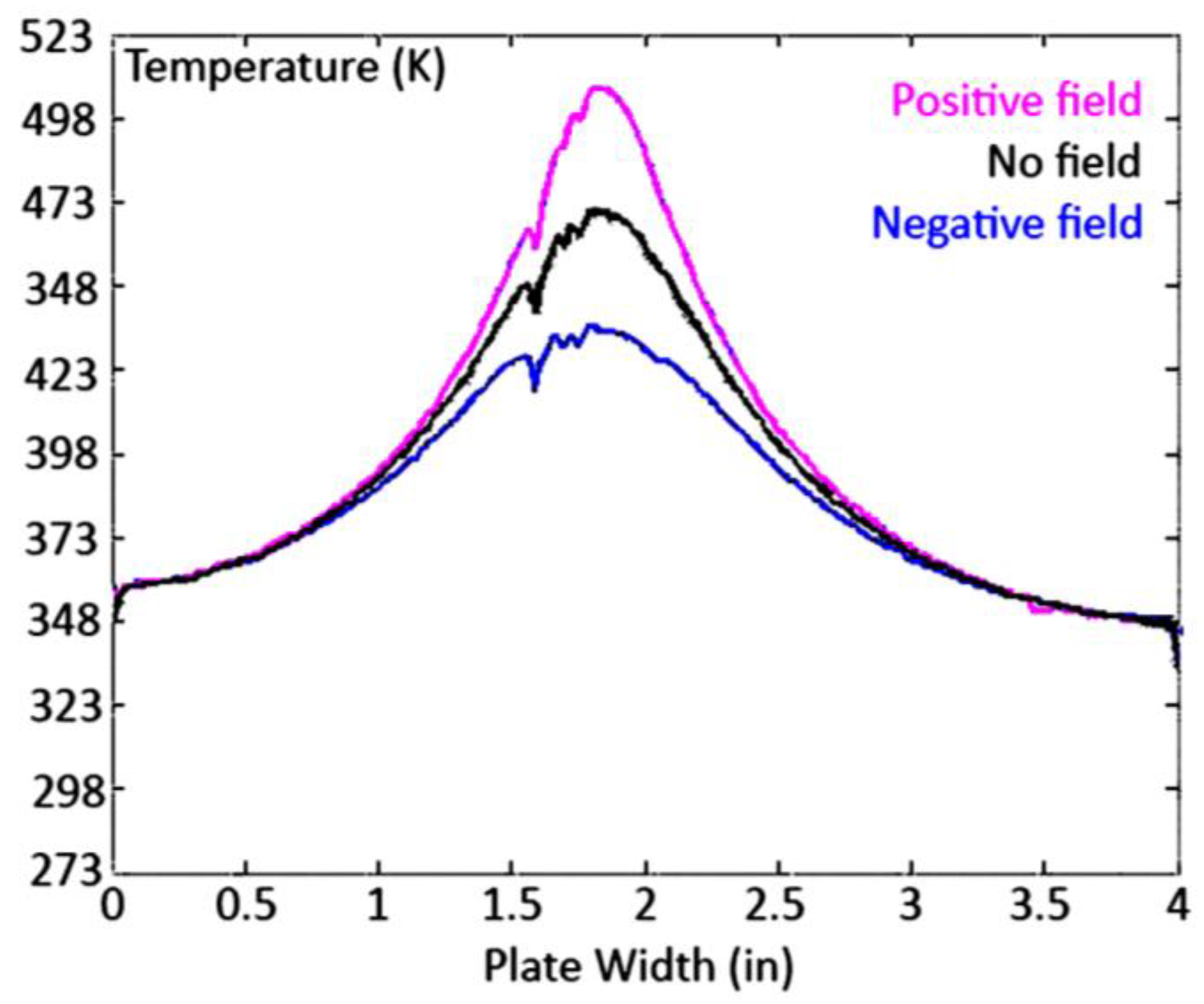
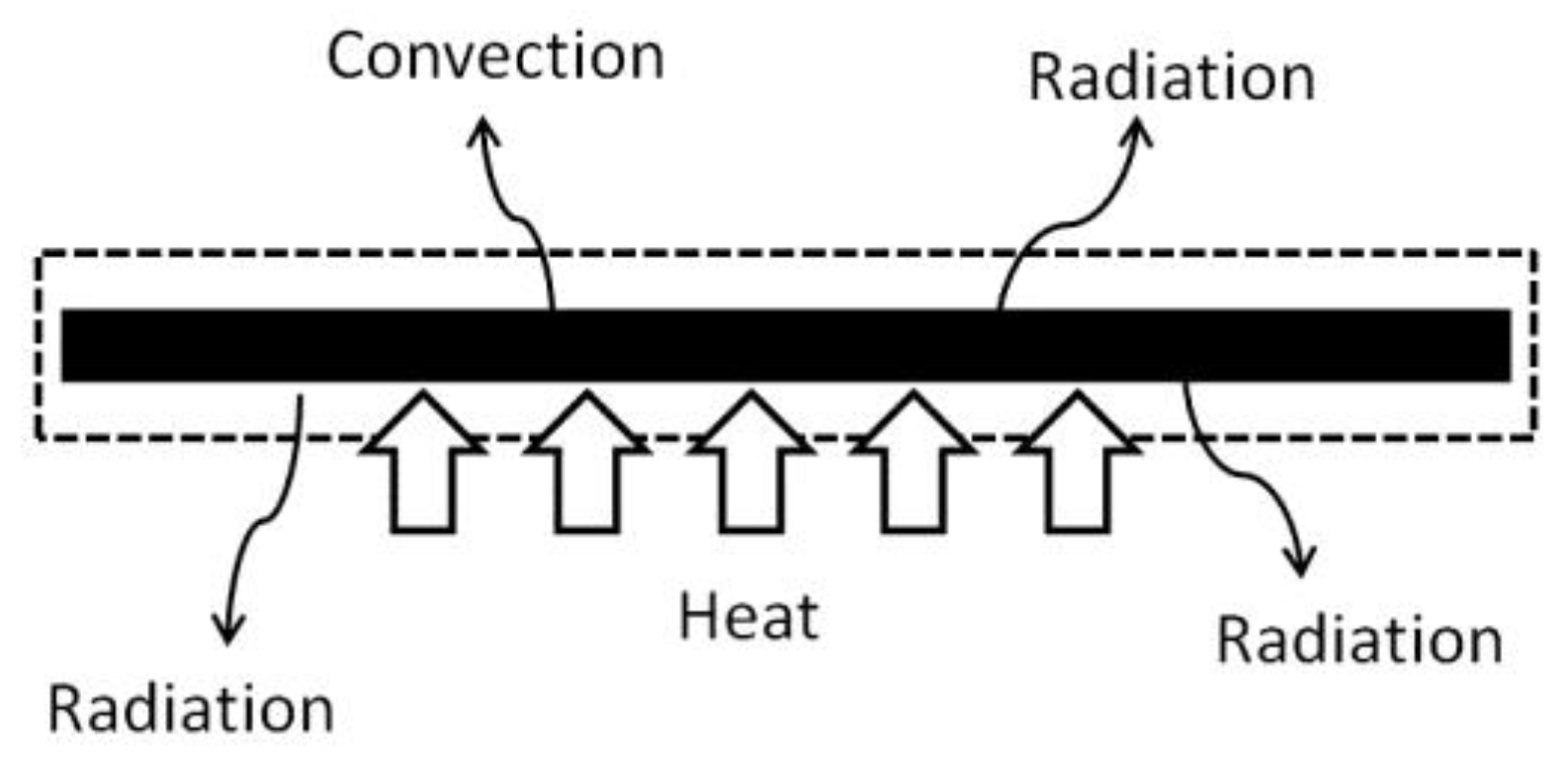



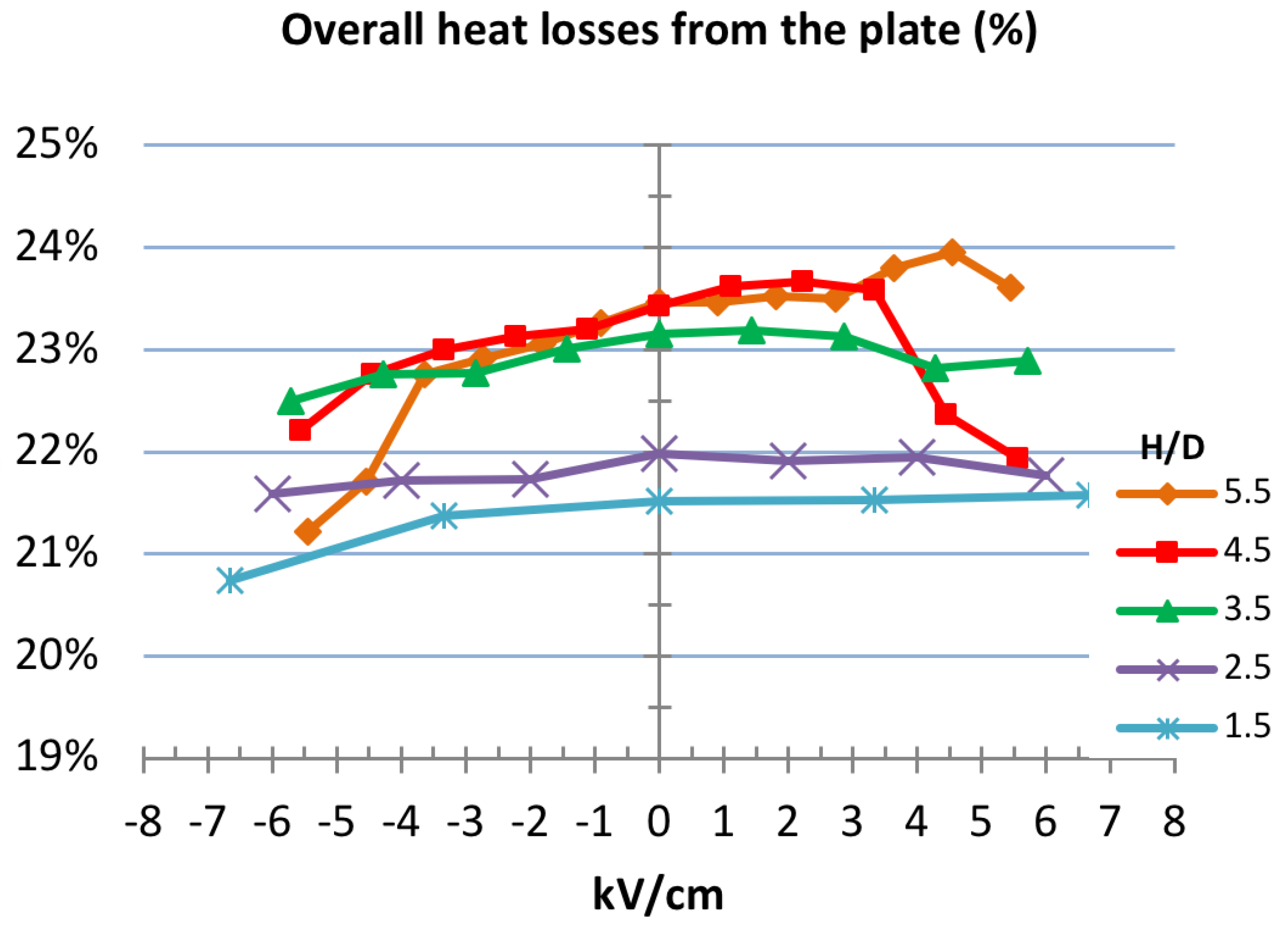

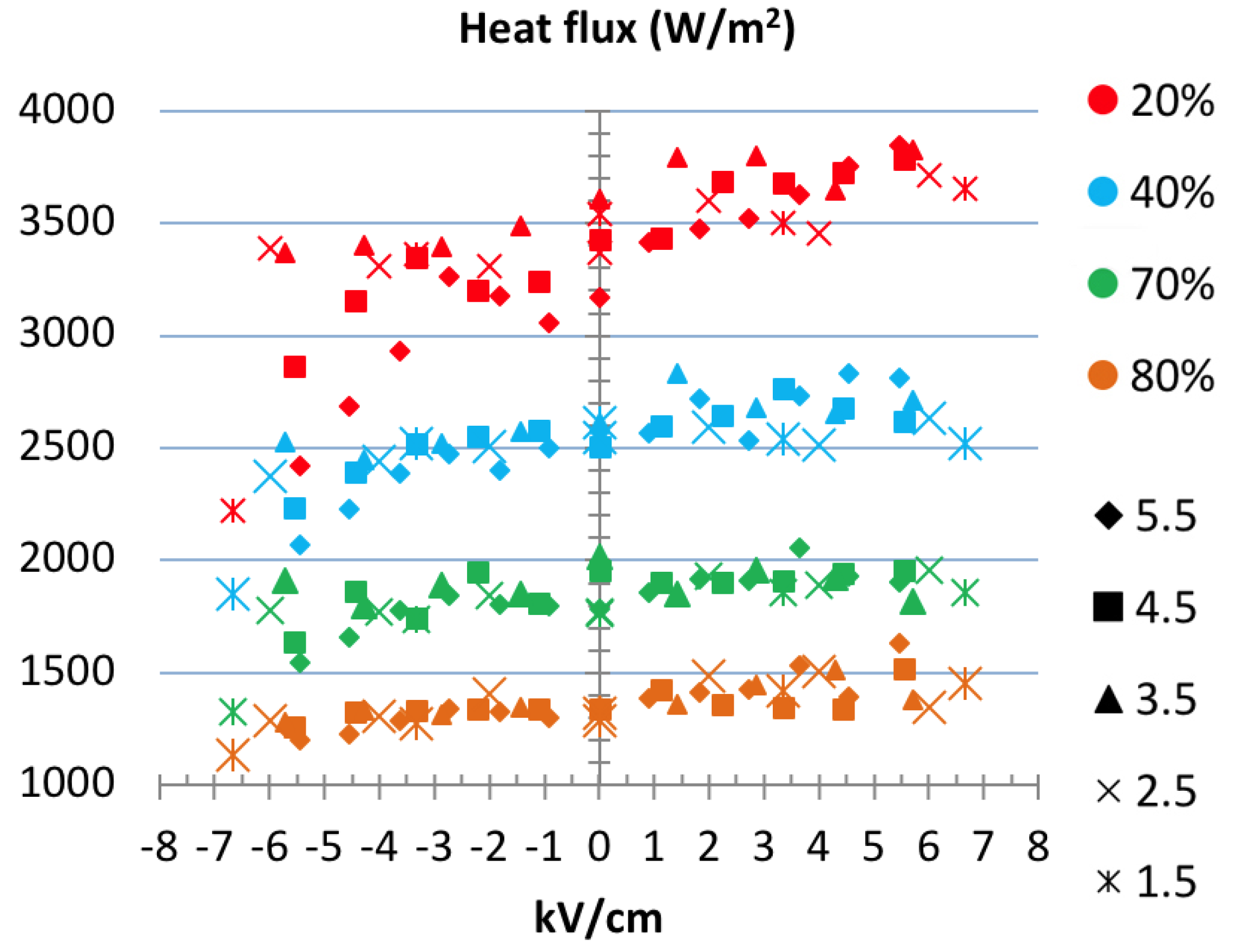

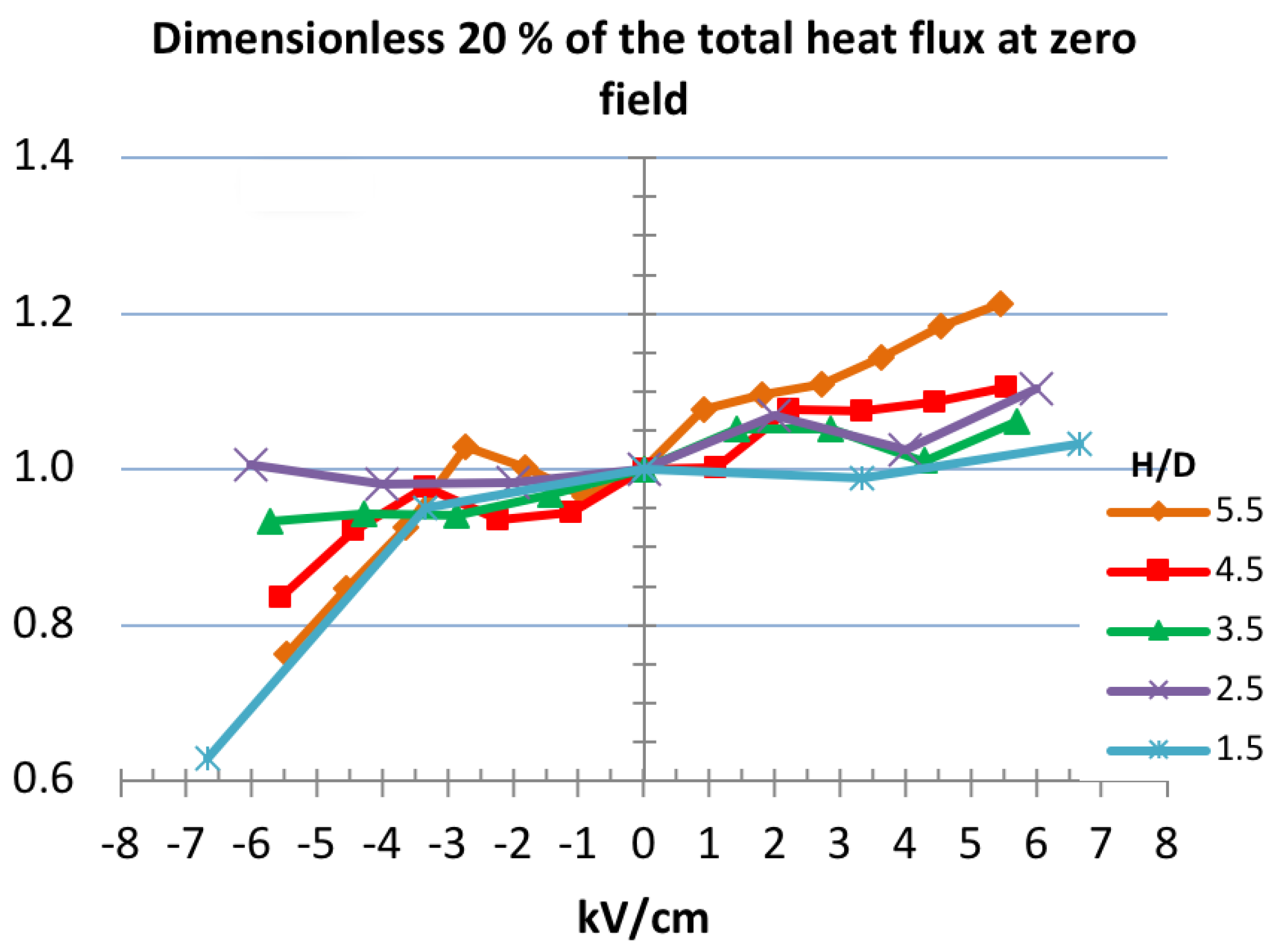
| H/D | KV/cm | −5.5 | −4.5 | −0.9 | 0.0 | 0.9 | 2.7 | 5.5 |
|---|---|---|---|---|---|---|---|---|
| 5.5 | Tmax (K) | 418.4 | 429.4 | 455.2 | 462.3 | 472.9 | 484.1 | 498.0 |
| Diameter (mm) | 24.5 | 22.8 | 22.3 | 21.9 | 21.1 | 20.7 | 19.8 | |
| KV/cm | −5.6 | −4.4 | −1.1 | 0.0 | 1.1 | 3.3 | 5.6 | |
| 4.5 | Tmax (K) | 491.1 | 489.9 | 470.4 | 472.0 | 492.0 | 509.1 | 493.4 |
| Diameter (mm) | 22.3 | 21.5 | 21.5 | 21.1 | 21.1 | 20.2 | 19.4 | |
| KV/cm | −5.7 | −4.3 | −1.4 | 0.0 | 1.4 | 4.3 | 5.7 | |
| 3.5 | Tmax (K) | 490.9 | 470.9 | 476.6 | 475.8 | 419.4 | 477.8 | 476.5 |
| Diameter (mm) | 20.7 | 20.7 | 20.7 | 20.2 | 19.8 | 20.2 | 19.8 | |
| KV/cm | −6.0 | −4.0 | −2.0 | 0.0 | 2.0 | 4.0 | 6.0 | |
| 2.5 | Tmax (K) | 484.1 | 481.3 | 482.4 | 434.7 | 462.7 | 464.4 | 501.5 |
| Diameter (mm) | 20.2 | 20.7 | 20.7 | 20.7 | 19.8 | 20.2 | 19.4 | |
| KV/cm | −6.7 | −3.3 | 0.0 | 3.3 | 6.7 | |||
| 1.5 | Tmax (K) | 489.0 | 454.8 | 464.0 | 471.0 | 492.6 | ||
| Diameter (mm) | 24.5 | 20.2 | 19.8 | 19.8 | 19.4 |
© 2018 by the authors. Licensee MDPI, Basel, Switzerland. This article is an open access article distributed under the terms and conditions of the Creative Commons Attribution (CC BY) license (http://creativecommons.org/licenses/by/4.0/).
Share and Cite
Chien, Y.-C.; Dunn-Rankin, D. Electric Field Induced Changes of a Diffusion Flame and Heat Transfer near an Impinging Surface. Energies 2018, 11, 1235. https://doi.org/10.3390/en11051235
Chien Y-C, Dunn-Rankin D. Electric Field Induced Changes of a Diffusion Flame and Heat Transfer near an Impinging Surface. Energies. 2018; 11(5):1235. https://doi.org/10.3390/en11051235
Chicago/Turabian StyleChien, Yu-Chien, and Derek Dunn-Rankin. 2018. "Electric Field Induced Changes of a Diffusion Flame and Heat Transfer near an Impinging Surface" Energies 11, no. 5: 1235. https://doi.org/10.3390/en11051235
APA StyleChien, Y.-C., & Dunn-Rankin, D. (2018). Electric Field Induced Changes of a Diffusion Flame and Heat Transfer near an Impinging Surface. Energies, 11(5), 1235. https://doi.org/10.3390/en11051235





